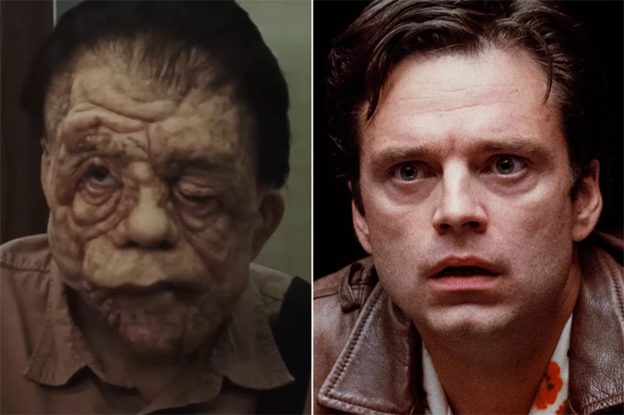
January 1, 2009
Obsessive Branding Disorder II
©2004 Funnypart.com
The current discipline and practice of branding is both obsessively fascinating and shamelessly polarizing. Because our lives are so entwined with brands, it has become difficult to distinguish between our beliefs and our brand preferences. From Apple to Starbucks, from Rachel Ray to Tiger Woods, corporations and individuals alike are immersed in a brand ethos. As a result, branding has become one of the most significant influences on both public consciousness and the contemporary visual environment and it is a fiercely debated subject.
Brands embody allegiances, affiliations and identities, and they have become ambiguous totems: They allow us to connect with others and, at the same time, to differentiate ourselves from others. Critics such as the writer Naomi Klein, the de facto leader of the anti-branders, think that the brand mentality and everything it entails — the economics required to sustain it; the advertising necessary to propagate it — have an insidious influence on global society, the environment, and the quality of human life. Lucas Conley, a writer for the magazine Fast Company and author of the book, Obsessive Branding Disorder, believes that “branding offers a unique example of a business philosophy that has jumped the tracks, barreling through popular culture unchecked.” He also states, “Somewhere between the grocery aisle and gross absurdity, branding has become an epidemic — a mirage turned miracle cure. In the global community in which new media and increasingly fickle stockbrokers demand immediate results, today’s corporations have taken comfort in branding’s soothing, vague idealism.”
Oh, if only it were that simple! 100 years ago, building a brand was rather straightforward. A logo was a telegraphic guarantee of quality and consistency, or it was a signal that a product was something new. For that, consumers were prepared to pay a premium. Brands were also the first piece of consumer protection. You knew where to go if you had a complaint. Brands also helped consumers to buy efficiently. Today, consumers also buy brands based on how that particular brand makes them feel. This positively infuriates Conley. “Experiences represent multi-sensory gold mines for brands, trapdoors into our most deeply held beliefs and values,” Conley states in the chapter “Buying Our Way Into Being.” “For most of us,” he continues, “the idea of a branded object eclipsing the bonds of family, friendship, work, or spirituality is ludicrous. But branding’s most fervent gurus celebrate the best brands for their capacity to establish themselves firmly in our hearts and minds. Our relationships with our dearest brands, they argue, ought to resonate on a spiritual level. To this end, one branding strategy that has gained momentum in the past few years is the concept of “the brand church” — places of “worship” for brand tribes to gather.”
In this example, and throughout Obsessive Branding Disorder, Conley overstates the power and capacity of brands. Yes, brands can assert moods, tastes and affiliations. Yes, brands can create deeply intimate worlds we can understand and where we may feel as though we belong. Yes, brands create tribes. In this regard, most people like the way their favorite brands make them feel. When we covet a brand, we covet the feeling that that we hope that brand will produce as a result. But Conley believes that brands not only provide these feelings, they usurp all others, and because of brands, we now feel isolated, lonely, and that “we are living in relationships brokered by brands (which are) by and large superficial.”
Conley continually makes unsubstantiated claims as to the virulent evil of brands and all those who work in the discipline. Without providing evidence, Conley states: “in the name of brand, any idea can be defended as valid and any crackpot can assume the status of guru” and “A brand is something to be controlled rather than any expression of authenticity.” Further, he asserts that companies utilizing branding techniques are “banking on illusion, not innovation, to stay alive” and “Many branders have a hard time proving the impact of their work.”
While Conley puts forth grandiose, broad generalizations about the base depravation that is branding, he fails to consider how brands create and sustain momentum by developing an honest and compelling emotional connection with the people who buy into the brand. Ironically, it is precisely this visceral and amorphous quality of “the brand” that confounds and challenges brand consultants, cultural anthropologists, marketers, researchers, and designers. Rather than see branding as an art within the broad spectrum of business disciplines, Conley claims that “reaching beyond reason, branding throws off business’s true north. Disoriented, obsessed with surface and sentiment over substance, companies apply their ingenuity to the disingenuous, perfecting names and nuances instead of responding to consumer needs.” Yet Conley never defines what he means by the statement “business’s true north,” nor does he prove how these same disoriented companies repeatedly fail to respond to consumer needs, yet somehow manage to successfully sell these same products to unsuspecting shoppers.
What Conley fails to consider is that consumers are not that stupid or that gullible. He claims, “Like a pesticide working its way up the food chain, branding reaches the American consumer at many entry points and in heady doses. We’re contaminated by the products we buy, the offices in which we work, the advertisements around us and the news and entertainment we absorb.” But brands are not as all-powerful as Conley alleges, nor is the public as easily manipulated. The reality is more complicated. When considering the pesticide analogy, I prefer to agree with Jonathan Bond and Richard Kirshenbaum of Kirshenbaum/Bond who believe that “Consumers are like roaches. We spray them with marketing and for a time, it works. Then, inevitably, they develop an immunity, a resistance.” Consumers are still in charge of what they buy and don’t buy (and what they buy or don’t buy into).
Conley constantly contradicts himself in Obsessive Branding Disorder. “With so many schools of thought about branding, it’s often difficult to determine what, if anything, separates good from bad branding,” he states in one chapter, but in another he claims, “In most cases, guerrilla, viral and buzz marketing campaigns are harmless and largely ineffective.” Obsessive Branding Disorder would have been a far more convincing book had Conley delved more seriously into the reasons behind the behavior he describes. For instance, though he asserts that brands have replaced religion, he doesn’t explain why. Yet answering this question is essential if we are to understand and critique the influence of branding. Why have we replaced our spiritual beliefs with products that provide social confidence or happiness? Why do more and more of us affiliate with consumer tribes and not with churches, temples, communities — or each other (if that is indeed the case)? Conley rigorously (if illogically, along with copious amounts of snark) articulates the many ramifications of branding but never investigates its history or its many failures.
Brand consultants are not the only targets of Conley’s derision. Designers come under attack as well. Conley states, “If brands are here to help us align our values, then the role of the modern branding professional is to amplify those aspirational values in the design and packaging of the product. The better things look — be they packs of gum or luxury sedans — the more people will desire them. Designers love this axiom because it implies that, if the design is good enough, the product is less important in the overall equation.” In Conley’s world, brand consultants, designers, market research professionals and advertisers all behave in one way and that one way is very, very bad.
In the last chapter of Obsessive Branding Disorder, Conley considers the future of branding. He admits that “people might be too clever” to let branding get under their skin and admits that as he was finishing the book, his colleagues at Fast Company were “quick to inform me that as a writer, I had a brand to maintain and that I ought to market myself by setting up a website and a blog.” Which Conley has subsequently accomplished. One of the great ironies of both the No Logo contingents and now the Obsessive Branding Disorder crowd is how willingly they employ the very tenets of branding they so obviously disdain.
For another interpretation of Lucas Conley’s book, see the essay previously posted on Design Observer by Adrian Shaughnessy, Obsessive Branding Disorder I.
Observed
View all
Observed
By Debbie Millman
Related Posts

Arts + Culture
Alexis Haut|Cinema
About face: ‘A Different Man’ makeup artist Mike Marino on transforming pretty boys and surfacing dualities

Arts + Culture
Alexis Haut|Cinema
‘The creativity just blooms’: “Sing Sing” production designer Ruta Kiskyte on making art with formerly incarcerated cast in a decommissioned prison

Media
Jessica Helfand|Dialogues
On the Shoulders of Midgets: A Conversation About Reality TV

Julie Lasky|Dialogues
Massimo Vignelli vs. Ed Benguiat (Sort Of)
Recent Posts
Runway modeler: Airport architect Sameedha Mahajan on sending ever-more people skyward The New Era of Design Leadership with Tony Bynum Head in the boughs: ‘Designed Forests’ author Dan Handel on the interspecies influences that shape our thickety relationship with nature A Mastercard for Pigs? How Digital Infrastructure is Transforming Farming and Fighting PovertyRelated Posts

Arts + Culture
Alexis Haut|Cinema
About face: ‘A Different Man’ makeup artist Mike Marino on transforming pretty boys and surfacing dualities

Arts + Culture
Alexis Haut|Cinema
‘The creativity just blooms’: “Sing Sing” production designer Ruta Kiskyte on making art with formerly incarcerated cast in a decommissioned prison

Media
Jessica Helfand|Dialogues
On the Shoulders of Midgets: A Conversation About Reality TV

Julie Lasky|Dialogues
